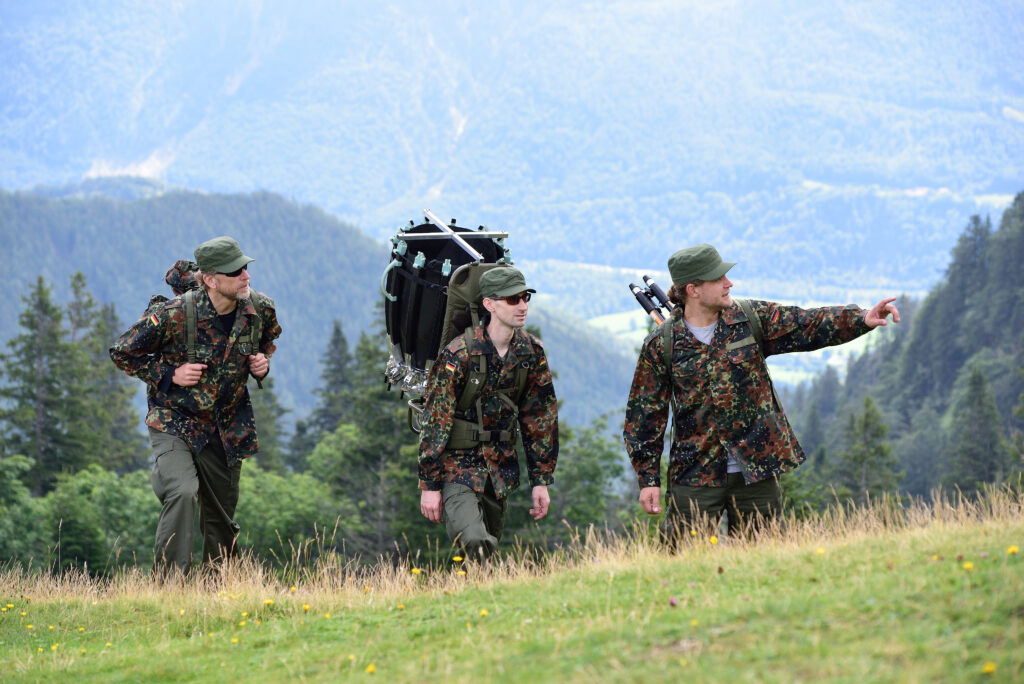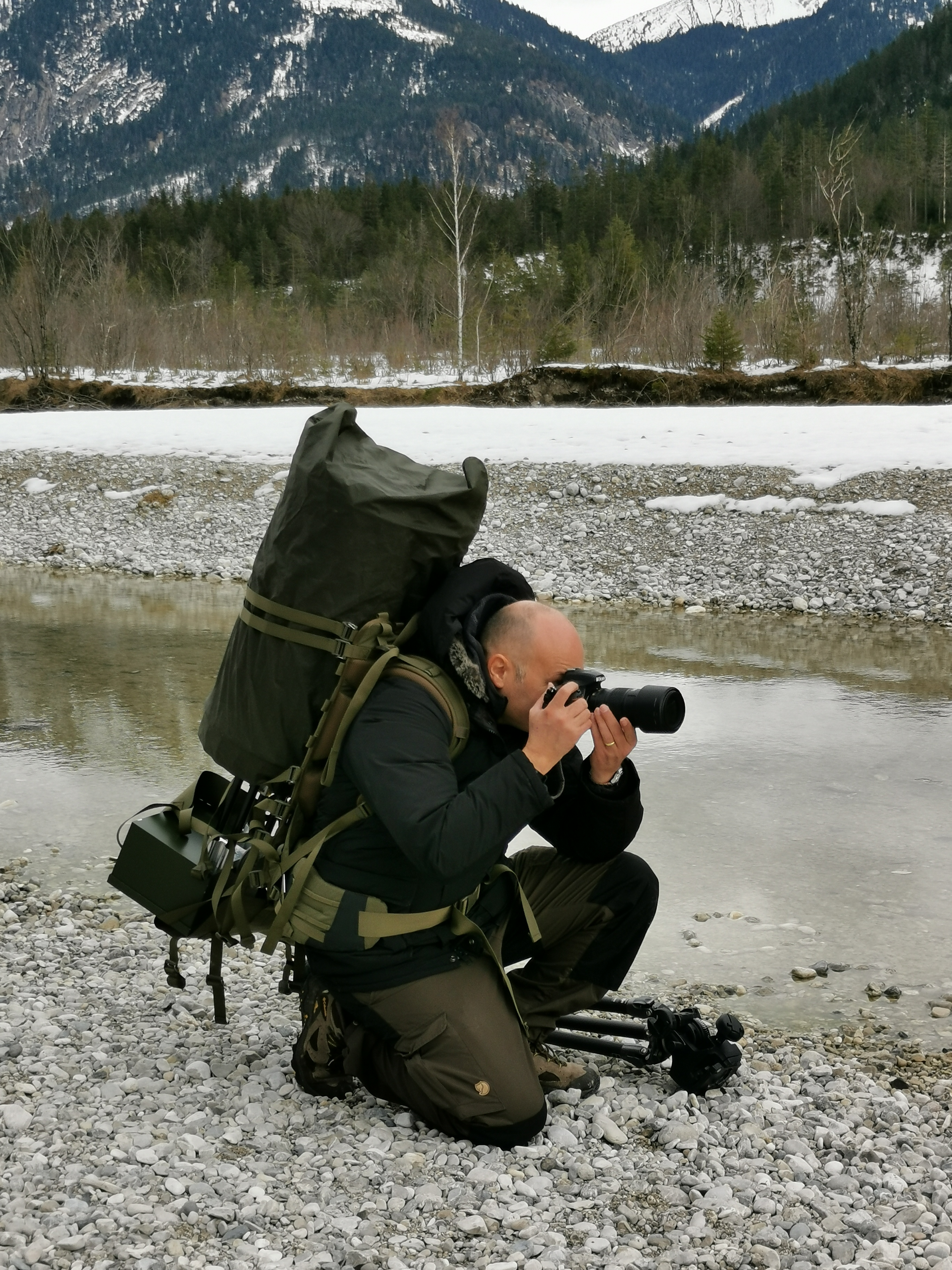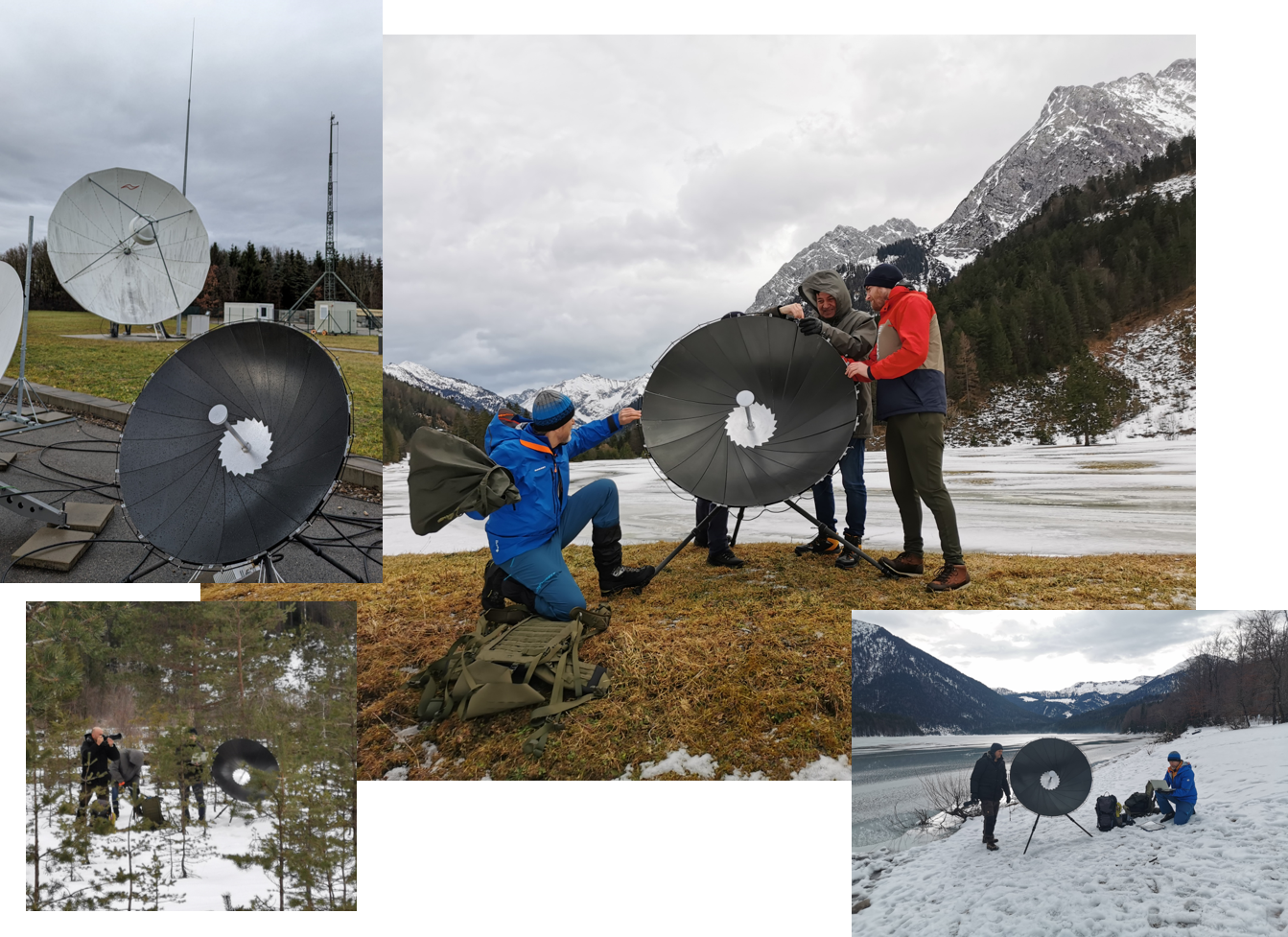January 2024
KEAN II passes the acid test at the University of the German Armed Forces and in the field
KEAN, the integrated deployable lightweight manpack complete antenna from HPS and its development partners, has taken a decisive step forward in the KEAN II (Second Generation) version: it passed the tough link test at the University of the German Armed Forces in Munich in December 2023 and the handling test in the field. This brings the goal of the joint HPS project much closer: the development of a complete system for bidirectional satellite communication based on preliminary developments already carried out by HPS and these specifications:
- Conformance to satellite operators (e.g. EUTELSAT, INTELSAT)
- Ku-band, 1.2 m diameter, also X- and Ka-band capable
- Including communication system, electronics, battery, tripod, backpack carrying system
- Total weight <20 kg
- Commissioning in under 15 minutes from backpack transport to satellite link
- Innovative, cybernetic folding mechanism based on the opening and closing of flowers
- Design and definition of components and production processes suitable for series production for a rapid transition to series production in large quantities.
Partners in the project are:
- The system supplier MTEX (Wiesbaden) with a focus on ground stations and electronics.
- The start-up Blackwave (Ottobrunn) with the economical series production of complex carbon components.
- The Chair of Carbon Composites (LCC) at the Technical University of Munich for the design of innovative extremely lightweight reflector fins.
- The Bundeswehr University for defining the user requirements and carrying out the antenna link tests with satellites.
The additional antenna deployment tests in rough terrain in the Bavarian Alps were closely monitored from the air by camera-guided drones; they provided complete documentation of the challenges, but also of the success of these tests. Videos are available at the YouTube Channel. Particular attention was paid to features and elements such as these during the tests:
- Wearing comfort off-road (walking and running) with different body sizes
- Assembly and disassembly over time in rough terrain (bushes, gravel, snow)
- Speed of unfolding and folding
- Handling by untrained test persons
- Wind load compatibility
- Handling in cold conditions (requirement: from -30o C to +55 o C)
- Robust construction
The target markets for applications of this completely new technology for communication via satellite, especially on X-, Ku- and Ka-band, cover all three conceivable directions:
- commercial, such as journalistic reporting from rough terrain
- institutional, such as rescue and disaster relief operations
- military, such as for small special forces operating independently of vehicles without a direct connection to the base of fully equipped large units
- scalable up to 3.6 m, also for mobile transportation on small vehicles.
Beyond the technical successes, KEAN II is currently growing wings from a completely different direction: the European Commission’s major IRIS2 project to establish absolutely secure connectivity via a dedicated multi-orbit constellation of several hundred satellites from LEO to GEO is giving a significant boost to all those application scenarios that were previously considered to have only seen very hesitant development due to their dependence on non-European constellations and individual satellites. This applies in particular to the institutional and military markets, both of which are now growing into larger dimensions.
The last stage of development was funded by the German Aerospace Center (DLR) as part of the ILKA project with funds from the Federal Ministry of Economics and Climate on the basis of a decision taken by the German Bundestag.
July 2021
Space specialists close innovation gap for threatening situations
In extreme cases, humans can do without many things for a certain period of time: clothing for months, depending on the weather, food for about three weeks and drinking water for up to three days. There is only one thing he really needs urgently and immediately: the possibility to communicate.
This applies to all life-threatening situations of both a civilian and military nature, to missions on the front line of aid in disaster areas, but also to journalistic reporting from cut-off places, to expeditions in remote regions, to police and intelligence special forces and, of course, also to military missions.
To date, the communications technology market for similar applications has been dominated by products with limited range, vulnerability to jamming and/or unwieldy dimensions and weight that can only be handled by vehicles.
To change this, under the consortium leadership of the Munich-based aerospace specialist for antenna technology HPS (Munich) the following partners have joined forces:
- The antenna manufacturer MTEX (Wiesbaden, Germany) with a focus on ground stations
- the start-up Blackwave (Ottobrunn) with the economic series production of complex carbon components
- the Chair of Carbon Composites (LCC) at the Technical University of Munich for the conception of innovative lightweight reflector blade
- the University of the German Armed Forces for defining user requirements and conducting antenna field tests.
The aim is to develop a complete system for bidirectional satellite communication on the basis of preliminary developments already carried out by HPS in the context of the program ILKA (“Integrated Deployable Lightweight Manpack Complete Antenna”) is a backpack antenna for communication “to go” (KEAN means deployable compact backpack antenna) with the following specifications:
- Conformity to satellite operators (e.g. EUTELSAT, INTELSAT).
- Ku-band, 1.2 m diameter, also X-band capable
- Including communication system, electronics, battery, tripod, backpack carrying system
- Total weight under 20 kg
- Setup in under 15 minutes from backpack transport to satellite link
- Innovative cybernetic folding mechanism based on the opening and closing of flowers
- Design and definition of production-ready components and production processes for rapid transition to volume production in larger quantities.
HPS, MTEX and BLACKWAVE are contributing significant in-house funding; the DLR Space Agency, through its Telecommunications Department, is supporting the project with an additional 670.000 euros. From launch in April 2021 to the start of the test phase in fall 2022, only 18 months are planned for the entire development. After the concept definition now in July 2021, the detailed design of the complete system will follow. The main driver of the ambitious schedule is the commercial and institutional expressions of interest already triggered by the initial pre-development of the system, amongst others from the Indo-Pacific region.
Have a look at our short clip: Man Pack Ku-band Antenna for Mobile Special Operations



